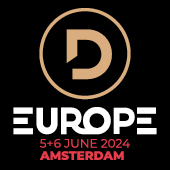European e-shoppers adapt to economic constraints, adopt new habits
.jpg)
European consumers remain convinced by e-commerce but are adapting to economic constraints and adopting new, post-pandemic purchasing habits, according to a recently-published major study which highlights the different consumption trends and patterns between countries.
Geopost/DPDgroup’s E-shopper Barometer 2022, which is based on 36,000 interviews conducted online in 22 European and nine non-EU countries, found that the choice of online shopping "is motivated by the practical aspects of this mode of purchase, which is considered less stressful, and by a search for ‘good deals’ in a context of economic arbitration for households."
The study noted that while impulse purchases have decreased, e-shoppers are buying a wider variety of goods, notably, essential everyday products. Sales between individuals also continue to grow while delivery in a parcel shop is gaining points, especially in Northern and Eastern Europe. However, home delivery remains the preferred option.
Regular e-shopper profiles
77% of Europeans consumers are e-buyers with the percentage higher in Italy (83%), the UK/Bulgaria (81%) and Germany/Netherlands (80%) but lower in France (67%).
48% of European consumers use e-shopping on a regular basis with 63% considering that it allows them to save money.
Poland and the UK top the list of regular e-shoppers, representing 57% and 55% of consumers respectively.
Regular e-shoppers in Europe are aged between 18 and 70, order at least one product category online every month and account for the largest share of online shopping activity with 87% of online purchases in Europe. These regular shoppers receive an average of 5.3 packages per month.
The typical profile of the European online shopper is a 42-year-old woman, married and living in an urban environment.
Product trends
While fashion, shoes and beauty products remain at the top of the list of goods purchased online, the surprise of 2022 was undoubtedly the entry into recurring e-shopping habits of essential everyday products, the study noted.
Groceries, fresh produce and ready-to-prepare food products, as well as hygiene and pharmaceutical products, are the categories that are currently growing most dynamically.
Food, in particular, has seen a notable shift with 35% of European e-shoppers purchasing in the fresh food and drink category. The most popular category is ready meals (65%), followed by frozen food (59%) and boxed food (45%).
Delivery habits
French consumers prefer home delivery (84%) and are happy to use parcel shops (54% versus 20% in Europe). In contrast, Estonians mostly choose lockers (82%).
As for dropping off parcels at a neighbour's house, this practice is common among Dutch e- shoppers, favoured by Belgians, the British and Germans, but is not very popular in France, Spain and Italy.
C2C e-commerce
One of the major trends observed in 2022 is the popularity of online sales between individuals.
57% of European e-shoppers buy products on second-hand platforms, on average 12.2 times a year, or about once a month.
Price consciousness
Against the backdrop of the war in Ukraine and its resulting economic consequences, especially inflation, e-shoppers are proving to be more price-sensitive than in the past. However, despite this heightened pressure, e-shoppers remain convinced by the time- and money-saving benefits of e-shopping, and are increasingly motivated to use the Internet to find especially good deals.
The desire to save money and participate in a more sustainable, more circular economy has driven a growing number of e-shoppers toward second-hand C2C transactions.
Higher expectations
E-commerce has steadily evolved from novelty to widely embraced retail channel, and e- shopper expectations have kept pace.
Among the top 10 criteria when buying online, first place by far is free delivery, followed by free returns and no hidden fees. Delivery-related criteria are growing in importance, including the choice in the speed of the delivery and the ability to be told the exact one-hour delivery time slot, while e-shoppers are showing growing appreciation for delivery services, especially those related to precision and selection.
Predictability is key
Fewer e-shoppers consider their online purchase and delivery experiences to be as smooth as in the past, especially buyers of white goods and home appliances, but also of fresh food and beverages.
One principal cause is the ever-growing consumer desire to manage and personalize the delivery experience (real- time delivery information is the #1 delivery preference among regular e-shoppers)
This underscores the key role that predictability-related delivery services can play in achieving customer satisfaction, the study said.
OOH solutions
While home remains the preferred delivery place, more and more regular e-shoppers are opting for the location that is most convenient to them, which often requires an out-of-home (OOH) solution such as parcel shops or parcel lockers, followed by the post office, a ‘safe place’ agreed on in advance with the carrier, work, or in-store.
But regardless of the delivery location, knowing the delivery company is increasingly important for regular e-shoppers, whether for greater peace of mind, the guarantee of good service, or because of personal preference.
Conclusion
"After decades of steady growth, the health crisis of 2020 was a watershed moment for the entire industry: shoppers massively chose online shopping, driving growth that exceeded all expectations," commented Jean-Claude Sonet, EVP in charge of Marketing, Communication & Sustainability at GeoPost/DPDgroup.
"Despite a natural adjustment after the end of lockdowns, consumer habits have undergone a radical change. Consumers can now freely combine online and traditional shopping to best suit their budget, tastes, preferences and societal beliefs."


